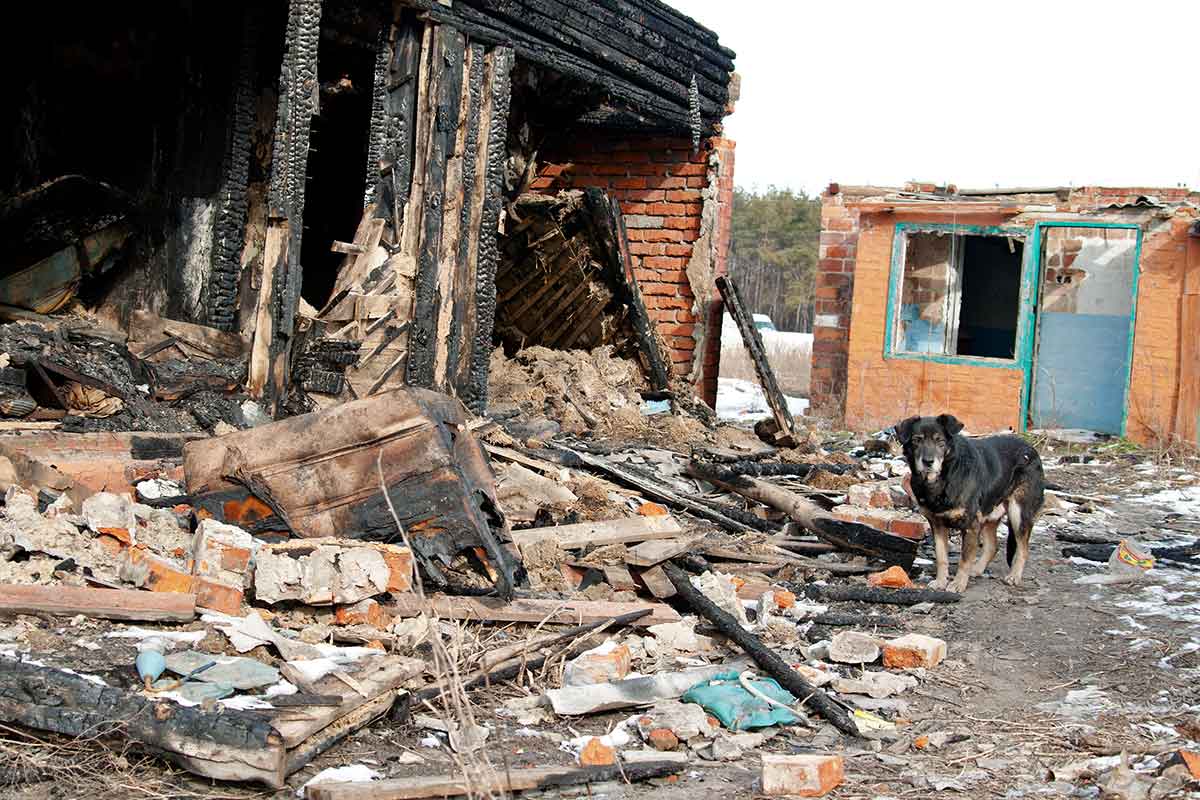Hurricane Harvey has swamped Texas. Hurricane Irma is threatening Florida. The West is on fire from the Mexican border to Canada. And one thing is certain: Floods, fires, earthquakes, hurricanes, tornadoes, and blizzards will keep happening, and they will keep displacing and injuring humans and our animals. And with that displacement comes fear, anxiety, and stress (FAS) – a scourge that afflicts our animals just as it does us.
While many emergency shelters now allow pets to stay with their human families, such settings are themselves incredible stressful. “You take a pet who, in day-to-day life is a source of comfort for their people, and put her in the tremendous noise and crowding of a shelter, and she may become a source of anxiety instead,” said Dr. Marty Becker, founder of Fear Free.
“Their own fear-induced behavior can also raise stress levels for everyone around them. And while we’re stressed out, at least we know now we’re safe. Our pets have no idea that they’re in a haven. To them, it can feel more like hell.”
That scenario is a reality Debbie Martin knows all too well. “I lived through Hurricane Katrina and ended up having to live in a hotel and then a small apartment with five dogs, two cats, and a parrot for over three weeks,” she said.
Martin, a veterinary technician specialist in behavior and member of the Fear Free Executive Council, says the experience taught her a few things about what works and what doesn’t.
“Try to provide as much familiarity as possible,” she advised. “Things like their regular bedding, food, toys, people, and more can make a huge difference. And do your best to provide a routine for interactions and meals, and incorporate play, training, and walks whenever you can.”
Martin recommended that pet owners avoid forcing their pets to interact with unfamiliar people and animals. “We found that a lot of small behavior issues tended to escalate when dogs and cats are forced into a new living situation with unfamiliar people and animals,” she said.
She also suggested that taking care of ourselves can help us take care of our pets. “Pets pick up on our emotions, so try to be as calm as possible. If you are relaxed, they will relax. Take time to decompress and take a walk with your dog. Focus on some one-on-one time with the dog.”
Even when the immediate crisis is past, problems may not be over. You may be in a hotel or temporary housing. Or you may have been able to go home, only to find it changed in uncountable ways. Is the living room molded, mildewed, and stinking? Is the furniture on the front lawn? Are the windows broken, the roof breached? Are there unfamiliar sounds of chain saws and demolition – or sometimes even worse, eerie silence?
So how can you keep anxiety levels as low as possible, and make temporary housing or a return to a changed home less frightening to your pets and less stressful for you?
“Once back home or in a new home, establish a routine to meet your pets’ needs,” Martin said. “That means play, social interactions with you, exploration activities, and positive reinforcement training.”
Sadly, some pets aren’t able to be housed with their people during or after a disaster. Dr. Lisa Radosta, a boarded veterinary behaviorist in Florida and member of the Fear Free Executive Council, also weathered Katrina, although in a different way.
“I left my residency for a time to volunteer at the Baton Rouge shelter after Katrina,” she said. “I would recommend that people visit their pets as much as they can if they are in a shelter or rescue. They can bring something that smells like home if they have it.”
What about cats, who are particularly susceptible to stress-related illness and don’t tolerate novelty well? If you find yourself in a hotel with your cats, Radosta said, “A box or empty suitcase can be an excellent hiding spot for a cat. Opening a bathroom cabinet in a hotel for the kitty and then keeping the bathroom door cracked will give them some much-needed privacy.”
After you’ve returned home or are in a more long-term interim situation, boarded behaviorist Dr. Gary Landsberg recommends providing social connection, comfort, and enrichment for anxious pets. “Careful reintroduction into the home, especially for cats, is critical. That includes things like supervision, rewards, offering safe places to settle, and the use of pheromones.”
You’ll want to keep an eye out for signs your pet is not handling the changes well and is suffering from FAS. Some behaviors to watch for, he said, are things like marking, not eating, or GI upsets. “If you see those things, you should see your veterinarian and consider consulting a behaviorist. And don’t hesitate to discuss whether a short course of natural supplements or drug therapy is indicated for anxiety.”
Said Becker, “Disasters by their nature are stressful and frightening. There’s no way to eliminate those negative emotions – not for us, and not for our pets. But in helping them with their fears and anxiety, we’ll once again find they can help us with ours.”
This article was reviewed/edited by board-certified veterinary behaviorist Dr. Kenneth Martin and/or veterinary technician specialist in behavior Debbie Martin, LVT.








